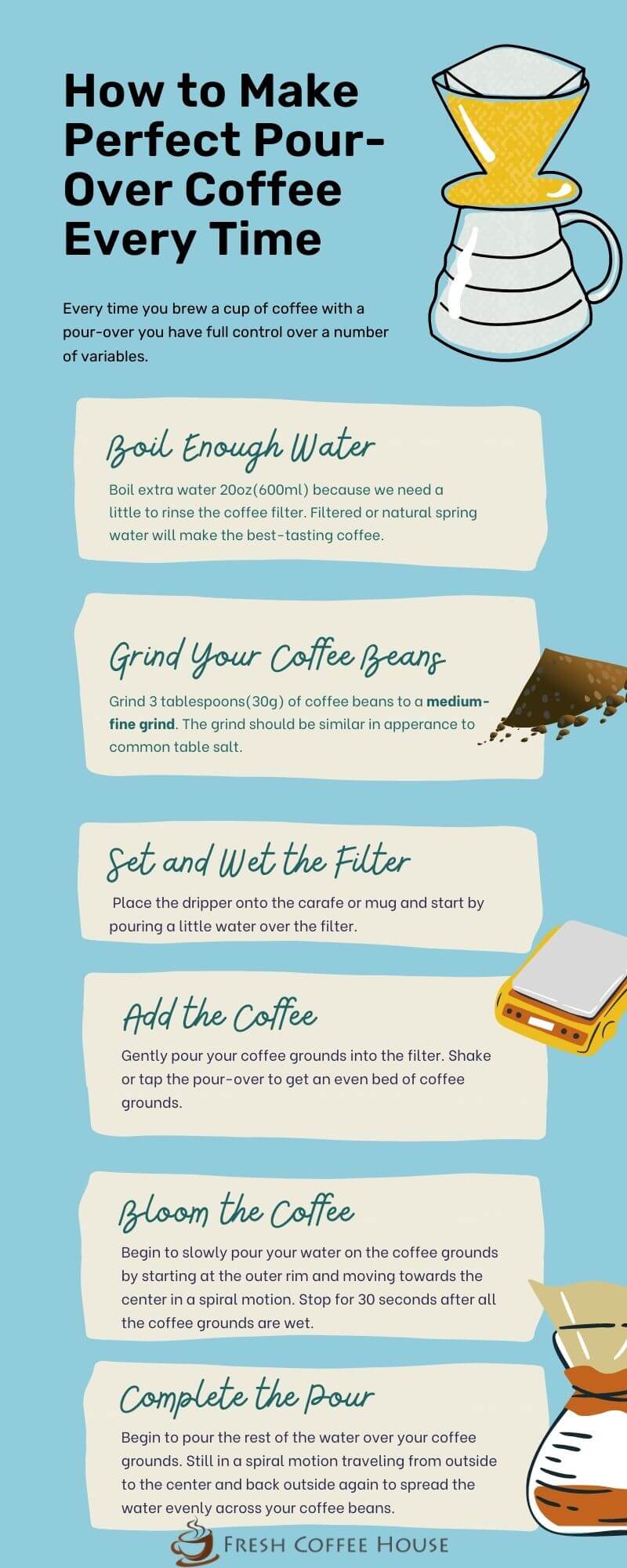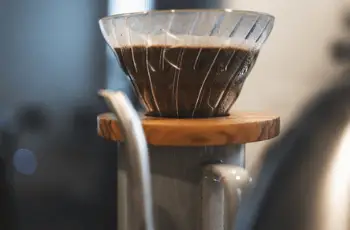Pour-Over
As an Amazon Associate FreshCoffeeHouse.com earns from qualifying purchases.
The Best Pour-Over Coffee Makers for Beginners and Experts
Anyone who has tried will tell you there is something special about brewing coffee with your own hands. In an ever more automated world, it’s a sincere pleasure to…
How to Make Perfect Pour-Over Coffee Every Time
Perfect pour-over coffee might seem a little tricky but is certainly within reach for anyone who follows these simple steps. There are so many reasons for brewing coffee manually…
The Best Coffee Beans Ideal for a Pour-Over
The reason for brewing coffee with pour-over is simple to understand, even if the technique isn’t as beginner-friendly. Whether you are new to the coffee community or have been…
Everything You Need to Know About a Pour-Over
As a fairly inexpensive way of making fresh coffee at home, the pour-over method is catching on in many café shops and households across the continent. They are often made from a ceramic material, but it’s common to see them crafted from steel or glass.
Pour-over coffee is bold and flavorful, you can expect to taste the true essence of your coffee beans.
This method uses boiled water poured over coffee grounds in a filter. Since the coffee grounds don’t come in contact with the finished coffee it’s often said that pour-over coffee has less grit than the brew produced by a French press.
Whether you are new to the coffee community or have been a coffee enthusiast for a long time you can agree there is something special about brewing coffee exactly to your liking each and every time.
Looking for a New Pour-Over?
Brewing coffee manually is a real pleasure for most coffee enthusiasts. To make a homemade brew you need the right equipment. That’s where this pour-over comes in. What you’ll find surprising is how affordable it is, especially compared to some of the other coffee appliances.
If you’ve outgrown the automatic coffee makers, which offer no personality and identity to your cup of joe, turn your attention to the pour-over.
If this model is not up to your standards take a look at this list of the best pour-over coffee makers I’ve personally tried or heard good things about.
- Capacity: 12oz, 17oz, 34oz, 51oz
- Permanent, stainless steel mesh filter
- Heat-resistant borosilicate glass
- Dishwasher safe
- Works well with paper filters
- Shatterproof option
What Coffee Beans Should You Use in a Pour-Over?
Now that you’ve got your coffee maker ready it’s time to choose the coffee beans. Your options here are endless. If you’re anything like me you’ll always look for a new band, bean, or roast to try out and expand your coffee horizons. In the meantime, I suggest you try out Verena Street Nine Mile Sunset Dark Roast.
I don’t want to oversell it but this could be quite possibly the best coffee I’ve ever tried. Obviously, you need to try a cup in a pour-over and judge for yourself, but the unique flavor profile, bright and delicate taste, and delightful body make this one of the best pour-over coffee beans.
When made in a pour-over this coffee is rich and smooth and the heavenly aroma is hard to describe.
One of the reasons why this coffee is such a success is because of the manual work the farmers and roasters put into bringing this product to life. Independent, family-run businesses just tend to give their coffee that little extra something, don’t they?
Verena Street: Nine Mile Sunset Dark Roast
- Beans sourced from small coffee farmers
- 100% Arabica coffee beans
- Flavor Notes: Complex with a rich but appealing roast character
- Kosher certified
I made an entire article dedicated to the best coffee beans suitable for the pour-over brewing method. I suggest you check it out to get an idea of your options and maybe start a coffee bean hitlist.
How to Make Pour-Over Coffee?
Now that you have the equipment and the beans, it’s time to learn how to make the perfect pour-over coffee.
What seems like a difficult way to make coffee actually becomes very easy with a little practice. Don’t overthink these simple steps, just follow along to a beautiful, tasty, smooth cup of coffee.
Step 1: Boil Water
Start by boiling the right amount of water. We will use 16oz(500ml) of water to brew two cups of coffee. I always boil extra water 20oz(600ml) because we use little to rinse our filter.
Let the water sit for 30 seconds before pouring it onto the coffee.
Step 2: Grind Your Coffee Beans
Here we need to grind 3 tablespoons(30g) of coffee beans to a medium-fine grind. Try to make your grounds resemble the consistency of table salt and make sure the grind is even throughout the batch.
Step 3: Set and Wet the Filter
If you’re using a paper filter, place the filter into the pour-over dripper. Place the dripper onto the carafe or mug you’re using to capture the coffee and start by pouring a little water over the filter to make it stick to the walls of the dripper.
If you need a little help with making your filter stick to the sides take a look at this helpful guide.
Step 4: Add the Coffee
Gently pour your coffee grounds into the filter. Shake or tap the pour-over to get an even bed of coffee grounds but remember not the push or compress them down.
This step seems simple but cannot be overlooked. The even layer of coffee will provide a consistent extraction through the brewing process.
Step 5: Bloom the Coffee (1st of 3 Pours)
As you start your timer, begin to slowly pour your water on the coffee grounds by starting at the outer rim and moving towards the center in a spiral motion. Continue to pour the water over the coffee beans until they are all saturated. This pour should take you roughly 15 seconds.
Step 6: Add Water (2nd of 3 Pours)
Roughly after 45 seconds, begin to slowly pour 7oz(200ml) of water over the coffee grounds. Remember to maintain the spiral motion to spread the water, and extraction, evenly across your batch.
Step 7: Complete the Pour (3rd of 3 Pours)
Begin to pour the rest of the water over your coffee grounds. Still in a spiral motion traveling from outside to the center and back outside again to spread the water evenly across your coffee beans.
Find the detailed instructions on how to make the perfect pour-over coffee here!

How Does the Pour-Over Compare?
Is the French Press Better than a Pour-Over?
See how the manual coffee brewing techniques give you a chance to experiment with new horizons in a world usually filled with repetitive automation.






